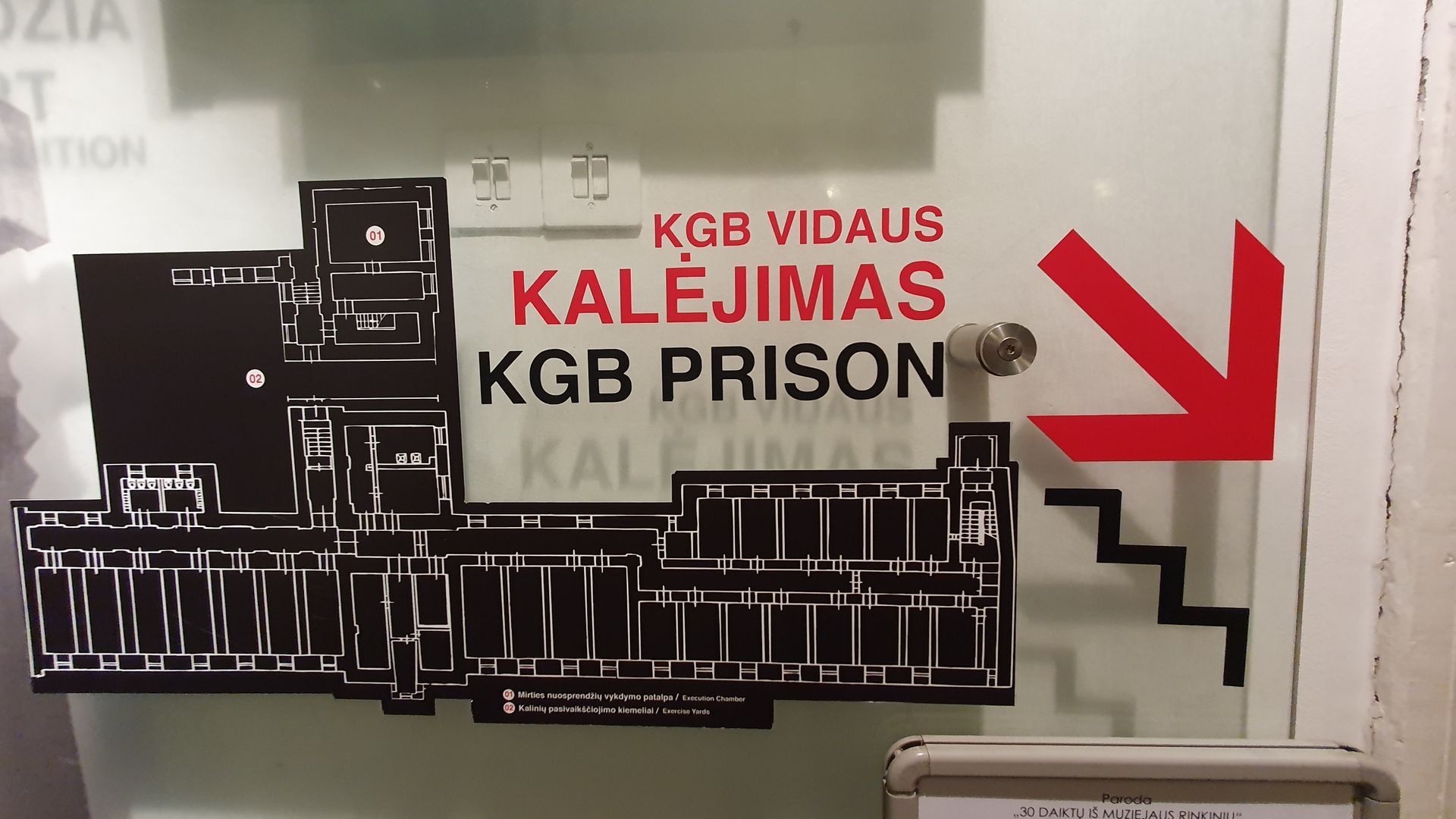
8 people was here
0 reviews
The building which houses the Museum of Genocide Victims is over 100 years old. Its history reflects the complicated events in the history of Lithuania at the end of the 19th and the beginning of the 20th centuries. From the end of the 18th century, Lithuania was a part of the Russian Empire. It was erased from the map of the world; it did not exist even in the administrative division of Russia. Its territory was divided into provinces, which included not only Lithuanian lands. This building was constructed in 1899 to house the courts of the Vilnius province. It was designed by the architect Mikhail Prozorov and the engineer Leonid Viner, according to sketches by the academician Wassilij Prussakov. The design started in 1888.
It took a long time to coordinate the work with Prussakov, and it was not completed until 1890. The construction started in the spring of 1897 and was completed in two years. In 1899 the building was opened. The new building, however, did not become a symbol of justice. Until the reestablishment of independence on 11 March 1990 (and even longer, until the demise of the Soviet Union after the August putsch in 1991), it housed all the time one state institution or another of the occupying regime.
1899–1915: the court of the Vilnius province of the Russian Empire. It is thought that the annex on Aukų gatvė was built between 1914 and 1915. No documents about its construction have survived. It is only known that in the spring of 1914 a search for a contractor was carried out, and that the annex is marked in a 1923 plan. It is in this annex that the Museum of Genocide Victims is housed.
1915–1918: German occupying institutions.
November–December 1918: a conscription centre for the Lithuanian Army and the commander’s headquarters for the city of Vilnius. With the fall of the Russian and German empires, the Council of Lithuania, elected by the people in 1917, declared the reinstatement of the country’s independence in Vilnius on 16 February 1918. Independence, however, had to be defended in bitter struggles against enemies, first of all against the local Bolsheviks, supported by Russia. The formation of a Lithuanian Army started, with the conscription centre and the commander’s headquarters for the city of Vilnius located in the courthouse (then the address was St. George Avenue 36).
January 1919–April 1919: the departments (commissariats) of the Bolshevik government of V. Kapsukas and a revolutionary tribunal. The newly formed Lithuanian Army was not able to defend Vilnius from the advancing Bolsheviks, supported by the Red Army. In the eastern part of the country, the so-called Lithuanian Soviet Republic existed for several months.
1920–1939: courts of the occupying Polish authorities. In 1920, Poland occupied Vilnius and the surrounding area, and until the autumn of 1939 the building housed the courts of justice of the Vilnius province. Under the Poles, in 1929 an annex was built on the present Vasario 16-osios gatvė. Since then, there have not been great changes to the building.
The autumn of 1940–June 1941: the Board of the NKVD of Vilnius, a remand prison. From the spring of 1941, the NKGB too. After the Soviet Union occupied Lithuania, mass reprisals started on 15 June 1940: people who were not trusted were arrested, killed or deported. For that purpose, special institutions were established, and the network of prisons was expanded. In the autumn of 1940 this building housed repressive Soviet institutions, and a prison was set up in the basement.
1941–1944: the German Gestapo and SD headquarters and a prison, barracks of the Sonderkommando of the city of Vilnius, which killed Jews and others. The Nazi occupation was one of the most dramatic periods in the history of Lithuania: over those years about 200,000 Jews were killed in Lithuania, and about 45,000 people of other nationalities were also killed. The walls of Cell No 3 bear inscriptions left by inmates between 1942 and 1944 when the Gestapo worked in the building. Most of them are in Polish, though people of many nationalities were imprisoned there.
1944–1991: a branch of the Lithuanian SSR of the NKGB (MGB, KGB) and a prison, renamed in 1959 as interrogation cells.
At present, several institutions are based in the building: The Museum of Genocide Victims, the Lithuanian Special Archive, where documents of the former KGB archive are kept, the Lithuanian Genocide and Resistance Research Centre, and courts of justice.
Loading...
Loading...
©2025 trip.lt

